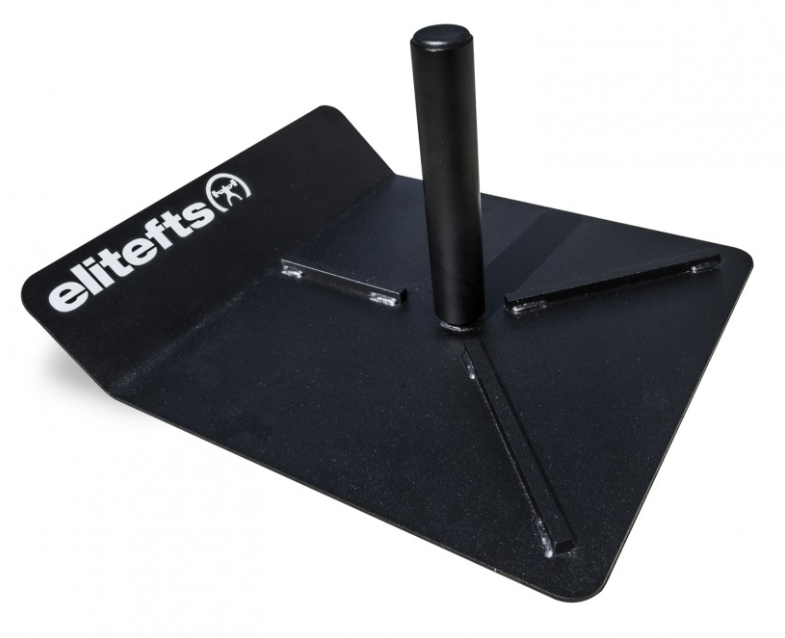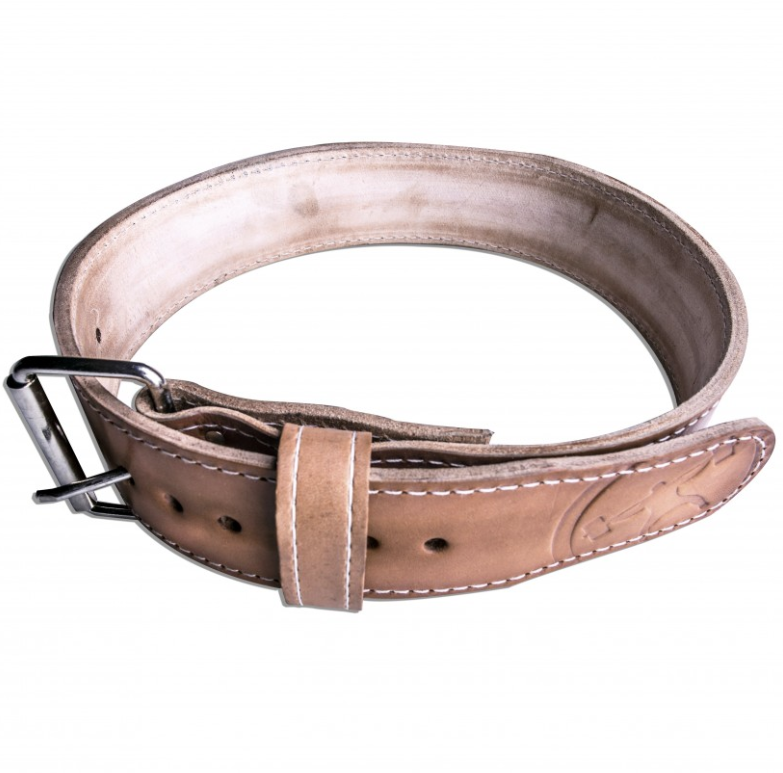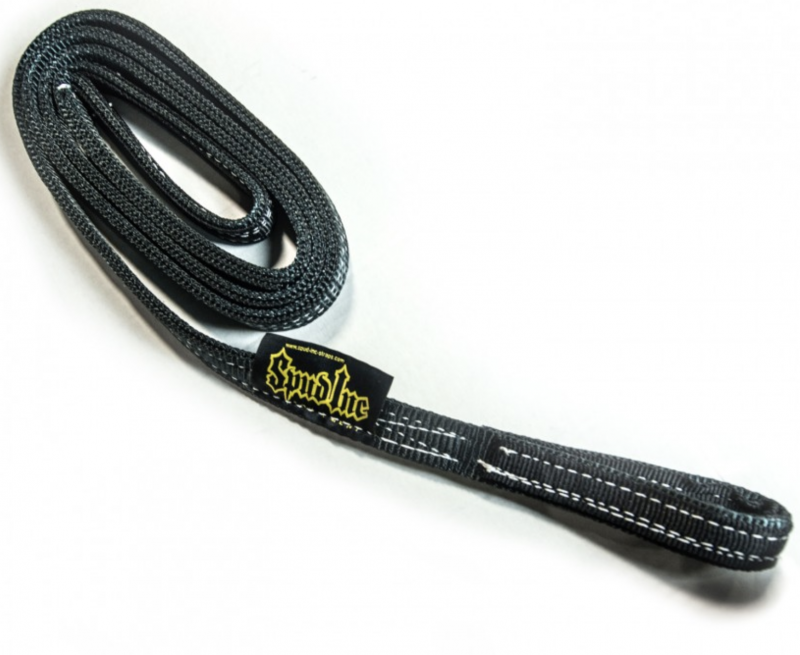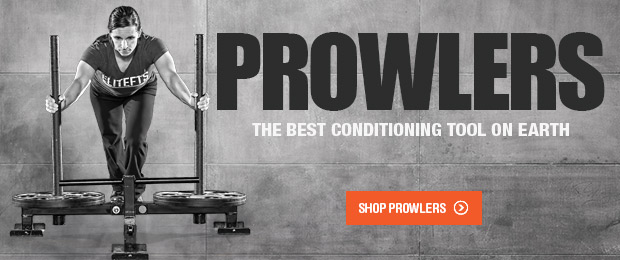Originally published December 18th, 2011
The First Time
The first time I started sled dragging, I was hooked from the start. I loved dragging around weights and pushing my lower body to work harder and harder while onlookers gawked with jaws dropping, saying, “What the hell is that moron doing?!” Little did they know how effective sled training could be for any athlete or powerlifter. Then again, little did they know about anything in regards to training!
I started off using a shoulder harness, a cheap one at that. It was not one of the $200 shoulder harnesses, either! I basically walked forward the entire time. I started with one plate and worked up to a plate and a quarter. This was plenty, especially on grass. In addition, I did much more than a few trips of 200 feet. I dragged the sled for a good 15 to 20 minutes across the grass area at the local park.
The Belt
Shortly after starting to use the sled, I called Louie Simmons, and we spoke about sled work for young athletes and me.
I switched to using a belt for sled dragging instead of the harness to help work the hams and glutes more effectively.
I then started to experiment with more sled work after I purchased a rope that is normally used for water skiing. The rope is split with two handles and shaped like the letter "Y." I did all sorts of rows, presses, rotational movements, standing ab work, triceps extensions, pullthroughs, and more — you name it, I did it. I basically thought of all the exercises I could do with free weights and bands and used them with the sled.
Sled Exercises
I also had my younger athletes perform sled work for 10 to 12 minutes per workout, and they loved it. They had a blast, worked the heck out of their posterior chains, and improved their GPP dramatically.
Here's a list of the sled exercises we choose from, constantly rotating and switching them around to avoid boredom and speed the progress:
- Forward drag with strap around belt
- Backward drag with strap around belt
- Side (lateral movement) drag with strap around belt
- Side drag while crossing feet over with strap around belt
- Bear crawls done for speed with strap around belt
- Walking lunges with strap around belt
- Standing chest press with split rope (done with elbows in and neutral grip)
- Standing chest press with split rope (done with elbows out and palms facing down)
- Forward leaning triceps extension with split rope
- Standing pulldown abs with split rope (done exactly as you would while using a cable or band apparatus)
- Pullthroughs using split rope
- Forward walking with rope in pullthrough position (sumo walks)
- Forward walking with arms extended in front (walk with high knees for extra variety)
- One-armed chest presses (alternate left and right, one rep at a time)
- Forward drag with split rope, hands behind back
- Backward drag with split rope, shoulders retracted slightly if weight is light enough
- High pulls using split rope
- Rows to chest with split rope
- One-armed rows using split rope
- One-armed rows with rotation
- Rotational pulls (complete designated reps for one side, then switch to the other side): start with the rope down by knees and then explosively rotate up and across body
- Reverse flye variations (using light weights or an empty sled): We call these the I-, Y-, and T-pulls, since you move your arms in the shape of these letters. These are great for working the smaller muscles of the upper back and deltoids and do not require heavy weights.
(Add two of these to the sled with a carabiner)
Program Design
This may not even be a full list, as I'm sure I forgot more than a few of the exercises we do. With regards to program design and how to incorporate the sleds, I experimented with a lot of variations. With that in mind, we are all different and respond differently to certain things, so experiment and see what you like best and what works best for you.
I personally like to do a variety of dragging, pushing and pulling using a weight ranging from a plate and a quarter up to two plates and a quarter. I might simply use one 45-pound plate and walk for 30 minutes through the park. The sled work may be done first or last in a workout, or the sled work alone might be the entire workout!
For the younger athletes, I like to keep them moving with moderate weights on the sled, as opposed to taking a trip of 200 feet and then resting. There's nothing wrong with being in shape, and most young kids are in horrible condition. We all know how profound of an effect improving their GPP can have on their ability to perform better.
Dynamic Training
Another benefit of sled work is that it can be a form of dynamic training. When athletes press, pull, or rotate the sled, they can do so in a very explosive manner.
The sled should slide across the grass, and the strap or rope should get loose at the completion of the movement. The loosening of the strap shows that they moved the weight explosively.
Also, this is a very safe form of dynamic training since there is no need to worry about the eccentric phase of the exercise.
A word of caution: Make sure your rope or tow strap is long enough so when you pull, rotate, or push the weight, the sled does not hit your feet or ankles.
The dynamic work with sleds is a great way to teach younger athletes how to explode when moving. Young athletes can see the sled shoot across the grass when they explode, or it may barely move if the weight is too heavy (or perhaps they did not explode). This allows them to understand the principle behind exploding through a movement and creating speed/force.
Large Groups
Sled training is also very economical and can be applied to large groups such as football teams. A few sleds can go a long way in improving the performance of a team. You can get five sleds, form five lines, or have kids partner up and perform five reps per exercise, and then switch off after every five reps.
The sled dragging can be done in relay races moving forward, sideways, and backward after athletes have completed their pressing and rowing movements and any other exercises you chose for that day.
The benefits of sled training are numerous. Take advantage of the sled work and use sleds on a regular basis, at least once a week. Whether you're an athlete, coach, or powerlifter, the sled will find a great place in your workout.
Don’t be lazy, either. The sled requires you to move your body, which will push your GPP up quickly. If you’re out of shape, it will show when you train. Your training partners will eat you alive, and you will look like a pansy getting your ass kicked all over the place! Who wants a training partner that can’t hang when it gets tough? That’s right, NOBODY wants a training partner like that! Catch my drift?
Athletes and coaches: How many teams or individuals do you think are using sleds regularly? Probably not too many teams use the sleds regularly, if at all. Imagine how much stronger your team can become from doing group training with the sleds.
Do not wait until summer workouts begin to start implementing sled work. Consistency is key, just like it is in all aspects of training. So get your ass out there and start dragging some sleds.
Zach Even-Esh is a Strength & Performance Coach in New Jersey and the founder of The Underground Strength Gym and the creator of The Underground Strength & Sports Performance Coach Certification. For more info, go to ZachEven-Esh.com or follow him on social media @ZEvenEsh.
Get your ass out there and start dragging some sleds! It’s not as much of a drag as you think it is. With 22 variations to get you started, the possibilities are truly endless.











